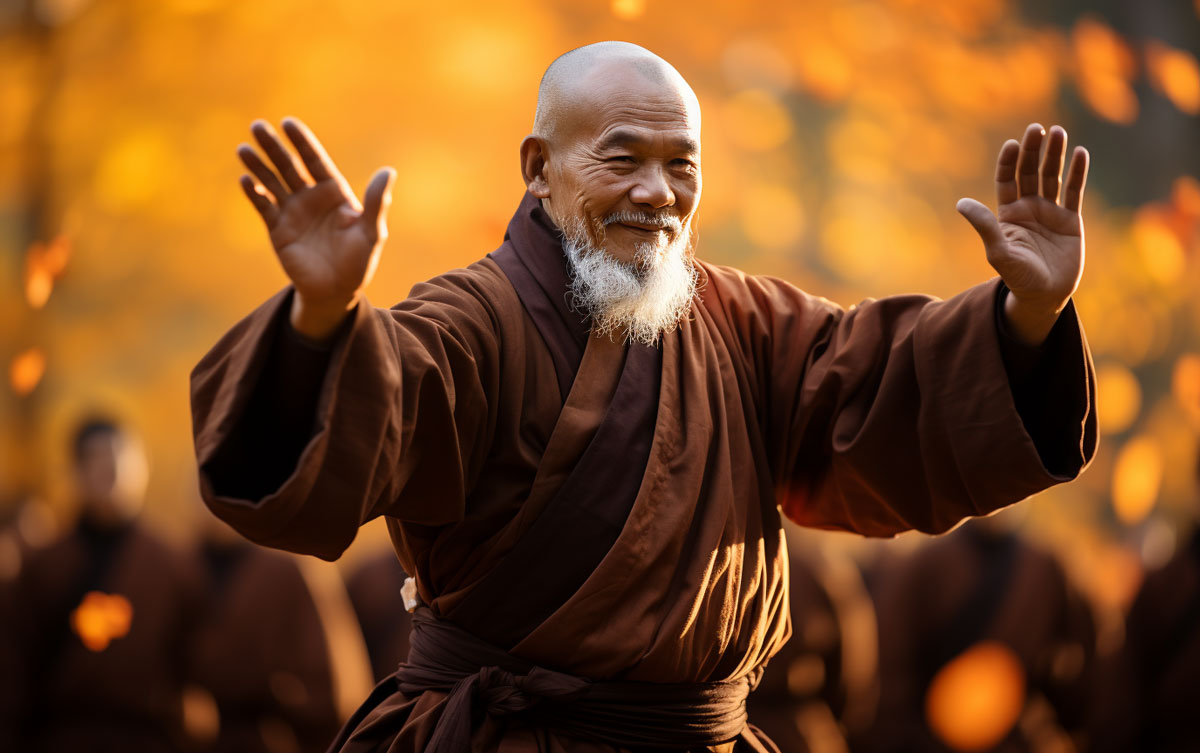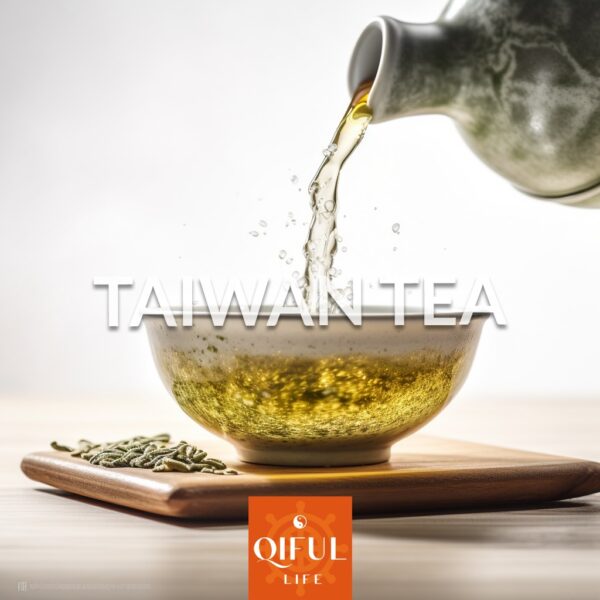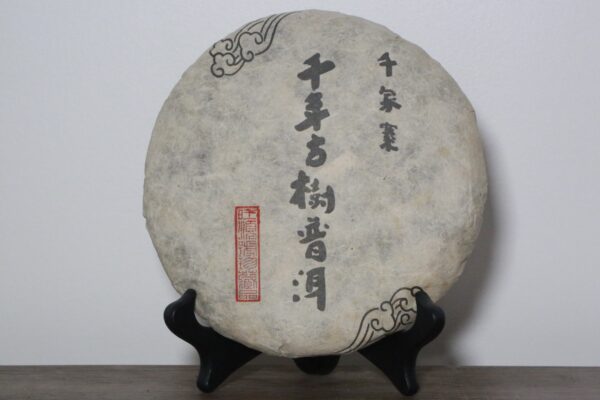Qi » Tea Blog » Qigong Information » The History and Development of Qigong

The History and Development of Qigong
Qigong has a long and debated history. In ancient times, climate fluctuations caused physical discomfort, including chest tightness and joint pain. People discovered that specific movements, breathing, and vocalizations could regulate bodily functions and treat ailments caused by stagnant qi and blood. This marked the beginning of ancient Qigong, initially used for illness prevention and treatment.
The earliest record of Qigong appears in the Warring States period artifact “Xing Qi Yu Pei Ming.” This 12-sided polyhedron depicts a form of Qigong, showing that it was an important healthcare method during the Spring and Autumn and Warring States periods.
Oral Tradition
Many Qigong and Daoist Lineages over the millennia state the history of Qigong goes back as far as 5,000 years. However, there is no documented evidence of this aside from oral tradition passed down through lineages.
Qigong’s Historical Development
Dating back to around 380 BCE, the “Xing Qi Yu Pei Ming” mentioned exercises like “cultivating qi deeply leads to accumulation, accumulation leads to extension…” Further elaboration of guided qi circulation appeared in the “Su Wen” section of the “Huangdi Neijing.” Laozi’s “Dao De Jing” emphasized a calm mind and lower abdomen focus. Recent archaeological findings in Han Dynasty tombs revealed a vivid “Guiding Chart,” illustrating mature guided qi circulation concepts during the mid-2nd century BCE.
Before 206 BCE
Zuowang, an essential Taoist cultivation practice, gained prominence during this era, coinciding with the completion of the “I Ching” around 1122 BC. The concept of “qi” was introduced, explaining changes in things through the “covering the sky theory.” The Zhou Dynasty saw Laozi incorporating breathing techniques for Qigong in the “Tao Te Ching,” considering it vital for health preservation. Qigong developed further as scholars explored the relationship between heaven, earth, and humans, becoming one of the foundations of traditional Chinese medicine.
206 BCE to 500 CE
The Eastern Han period witnessed the introduction of Buddhism to China, and the practices of cultivating the mind and nourishing the spirit gained popularity alongside Daoist practices. Qigong practices evolved and incorporated various religious concepts, becoming important for monks’ mental and physical elevation. Different Qigong schools emerged, leading to mutual infiltration, absorption, and improvement of methods.
History of Qigong from 500 CE to 1911 CE
In the Liang Dynasty, Qigong started being applied in martial arts, giving rise to forms primarily aimed at strengthening the body, such as Tai Chi and Shaolin Qigong. By the late Qing Dynasty, external exchanges introduced Qigong from India and Japan, influencing each other.
1911 CE to Present
After the establishment of the People’s Republic of China, Qigong gained widespread recognition and rapid development. Medical professionals and Qigong masters collaborated to popularize it for daily disease prevention and health enhancement. Scientists explored the physiology, biochemistry, and modern medicine aspects, contributing practical insights. Today, Qigong is globally recognized, moving away from exclusive family teachings to become widely accessible.
The Different Types of Qigong in Chinese Culture Throughout History
Confucianism
Confucianism advocates rectifying the heart, cultivating oneself, and nourishing qi. Through Confucian concepts, combined with medical and martial arts practices, five major Qigong schools persist: Daoist, Buddhist, Confucian, medical, and martial arts. Qigong’s extensive application in various fields and its association with religious concepts make it profound, serving as the foundation for various disciplines.
Daoism
In Daoism, Qigong emphasizes harmonizing with natural laws, achieving balance of body and mind, and nurturing both form and spirit.
Buddhism
As for Buddhism, Buddhist Qigong focuses on cultivating a tranquil mind, understanding the emptiness of the four elements, and realizing the true nature of the mind through meditation and mental activities.
Medical
Medical Qigong prioritizes disease prevention and treatment, emphasizing the preventive medical viewpoint of “treating illness before it occurs.”
Martial Arts
Martial Arts Qigong emphasizes strengthening the body to achieve high martial arts proficiency, known as internal martial arts.
TCM
In traditional Chinese medicine, Qigong is integral. Throughout ages, medical practitioners emphasized Qigong, influencing its development. Descriptions of Qigong exercises, theories, and therapeutic effects were recorded in ancient texts like the “Huangdi Neijing” and “Jin Gui Yao Lue.” Renowned physicians specialized in guiding Qigong practices, shaping its role in health.
In summary, Qigong’s classification is challenging due to mutual evolution and permeation of academic theories and methods. Five types broadly categorize Qigong practices: guiding movements, breathing regulation, static meditation, visualization, and circulation of qi along meridians.
Purpose of Qigong
In simple terms, “qi” in Qigong represents breath, and “gong” refers to consciously adjusting breath and posture. Practicing Qigong involves self-regulation, adjustment, and control, leading to physiological changes in the “Qi state.” Core elements include mind regulation, breath control, and body adjustment. Correct methods induce states where qi flows through meridians, leading to a “resonant state” or “deep meditation.”
Cultivating Body and Mind
Opening the Ren and Du meridians is crucial in Qigong health cultivation. Ancient observations of animals like deer, cranes, and turtles influenced Qigong practices. Animals known for longevity exhibited habits facilitating qi circulation along meridians. The Five Animal Frolics, tracing back to the Spring and Autumn period, imitates animal movements for fitness. Qigong, rooted in philosophy, transcends fitness, becoming a means of cultivating the mind and nurturing one’s nature.
Philosophical Concept of “Qi”
The concept of “Qi” expanded from an invisible force in the universe to an essential philosophical concept in Chinese thought. Beliefs in the continuity of life, harmony of Qi affecting a nation’s fate, and the philosophical views expressed in ancient texts shaped Qigong into more than a fitness and longevity practice. Qi, as the foundation of life, made Qigong a means of cultivating the mind and transcending the secular to achieve immortality or sagehood.”






